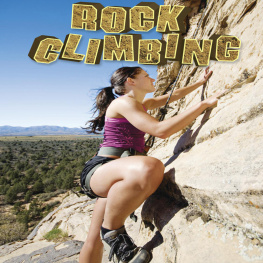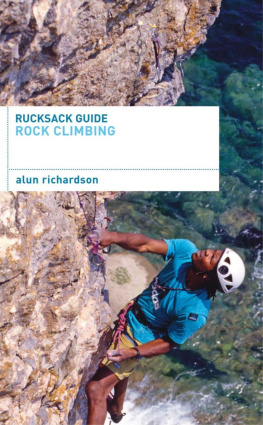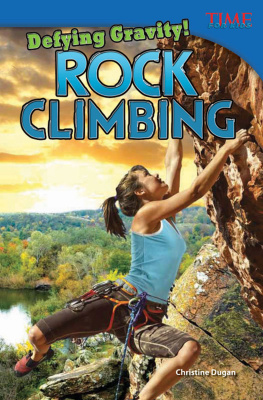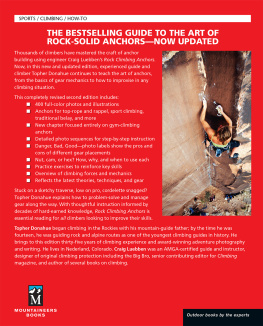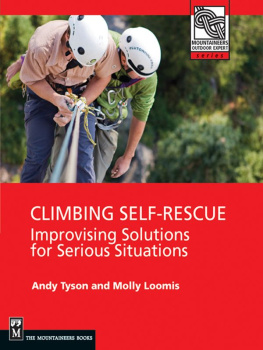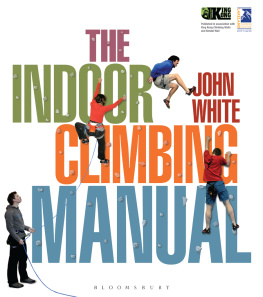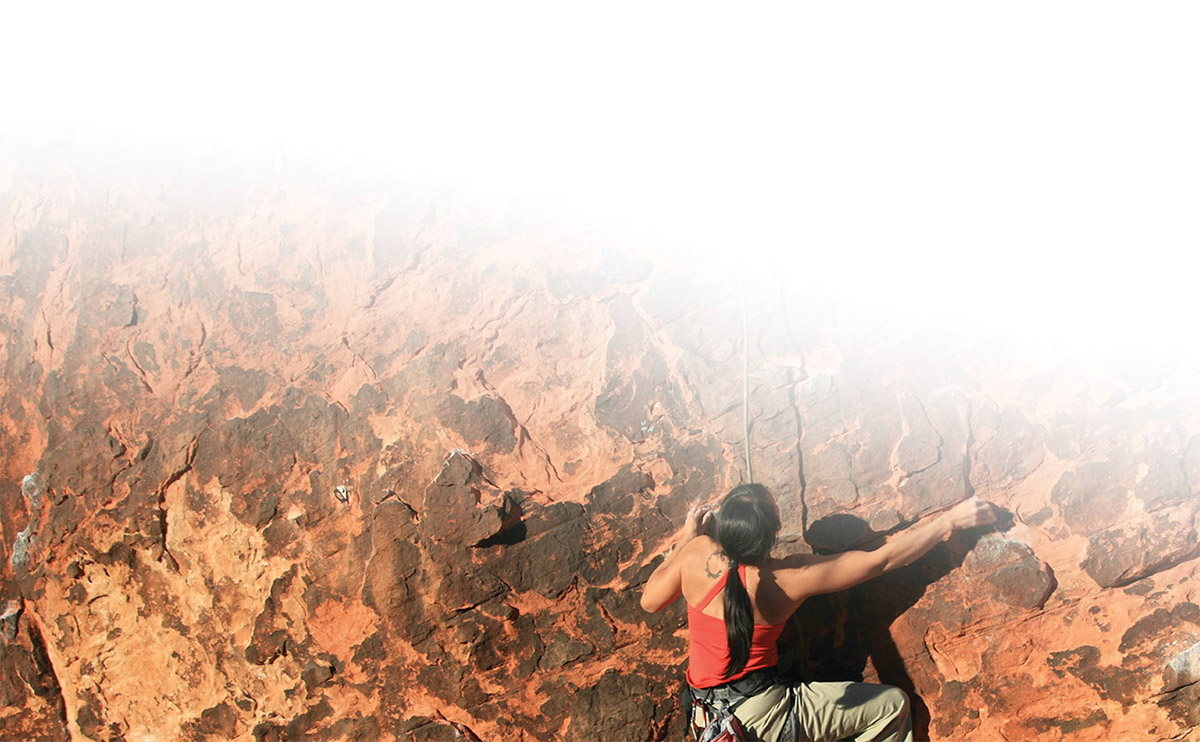Bob Gaines began rock climbing at Joshua Tree National Park in the 1970s. Since then he has pioneered more than 500 first ascents in the park.
Bob began his career as a professional rock climbing guide in 1983 and is an American Mountain Guides Association Certified Rock Instructor. He is the coauthor of Rock Climbing: The AMGA Single Pitch Manual, the textbook for the AMGAs single-pitch instructor program.
Bob has worked extensively in the film business as a climbing stunt coordinator. He has coordinated more than forty television commercials and was Sylvester Stallones climbing instructor for the movie Cliffhanger. Bob doubled for William Shatner in Star Trek V: The Final Frontier as Captain Kirk free soloing on El Capitan in Yosemite.
Bob has worked extensively training US military special forces, including the elite US Navy SEAL Team 6, and is known for his technical expertise in anchoring and rescue techniques.
He is also the author of Best Climbs Joshua Tree National Park, Best Climbs Tahquitz and Suicide Rocks, Rappelling, and Advanced Rock Climbing and is coauthor of Climbing Anchors and the Climbing Anchors Field Guide (with John Long).
Bobs other passion is fly fishing. He currently holds thirteen International Game Fish Association world records.
F irst of all Id like to thank John Burbidge at FalconGuides for putting it all together.
Thanks to Wills Young for his insights on face climbing techniques.
Thanks to the climbers who posed for photos: Calista Holden, Michael Bains, Patty Kline, Steve Schwartz, Frank Bentwood, Mike Morretti, Nicole Miyoshi, and Vivian Koo.
Thanks to the guides who posed while demonstrating techniques: Tony Sartin, Terri Condon, Peter Croft, Erik Kramer-Webb, Tony Grice, Erin Guinn, Jarad Stiles, Lisa Rands, Wills Young, Bryan Baez, Robin Depke, and Adam Radford.
TOM GRUNDY, LICENSED BY SHUTTERSTOCK.COM
Thanks also to my fellow guides and mentors, from whom Ive learned a great deal: Chris Baumann, Jarad Stiles, Adam Fox, Jon Tierney, Alan Jolley, Peter Croft, Scott Cosgrove, Marcus Jollif, Todd Vogel, Erik Kramer-Webb, Tony Grice, Tony Sartin, Pat Dennis, and Dave Mayville.
Special thanks to John Long for the many insightful conversations we had while working on the Climbing Anchors books.
Thanks to my wife, Yvonne, for her help with the photography, and for being my number-one climbing partner.
Toproping at Joshua Tree National Park, California
The ideal toprope crag is less than 100 feet high, with an aesthetic, sheer face of rock. It offers an easy walk to the top of the cliff; bomber anchors; clean, solid rock that minimizes rockfall danger; and a flat, comfortable base for belaying and hanging out. The perfect cliff has numerous routes at the level you find enjoyable and challenging for a fun day at the crag. To find your ideal crag, consult a climbing guidebook or ask for recommendations at your local climbing retail shop.
A topo is a photo or other diagram detailing the location of the routes on a particular cliff.
Guidebooks will usually give you a description of how difficult it is to approach and descend from a particular cliff, along with a description of the location and rating of the routes on the cliff. Most guidebooks include toposeither a photo of the cliff with the route lines marked, along with a verbal description, or a diagram of the routes with the route lines marked and symbols identifying the location of features like cracks, corners, chimneys, trees, bolts, fixed rappel anchors, etc. Studying a guidebooks description can tell you if the top of a particular cliff can be easily approached and descended without any Class 4 or 5 climbing. Wellknown toproping cliffs are usually popular because they have easy access, good anchors, and goodquality climbs.
This is the Class 15 rating system:
A Typical Day of Toproping
J ohn and Jill had done their homework and studied the guidebook before they arrived at their crag of choice. From the parking area it was just a short hike to the crag. It was a fine spring day, sunny but cool, and as luck would have it, they had the crag all to themselves. Jill pulled the guidebook out of her pack and surveyed the rock face.
It says the approach to the top is Class 3 over on the north side. Lets gear up here. There are a bunch of routes we can set up!
They put on their harnesses and sorted their rack. Between them they had two sets of cams to 3 inches, plus a good selection of nuts, carabiners, and slings, two cordelettes, a 100-foot low-stretch rigging rope, and a 60-meter dynamic climbing rope. They both were wearing approach shoes with sticky rubber, which gave them confidence in their footing for the short but exposed scramble to the top.
Lets set up the 5.6 to warm up, John said.
They built two separate anchorseach with three cams equalized with a cordeletteand then used their extension rope, configured in the Joshua Tree System, to extend the rigging over the edge of the cliff so that the climbing rope would not be running over a sharp edge that could cause wear or even cut it. They each used a double-length nylon sling, attached to one leg of the rigging rope with a klemheist knot, connected to the belay loop on their harness with a locking carabiner, to protect themselves as they approached the edge. They each rappelled down by pre-rigging their ATC (Air Traffic Controller) rappel devices onto the climbing rope, backed up with an autoblock knot.
When they were both back down at the base, Jill built a ground anchor by slinging a tunnel between two boulders. Since John outweighed her by 100 pounds, shed learned to always anchor herself when belaying him so she wouldnt get pulled from her stance if he fell. She tied into the end of the rope and connected herself to the ground anchor with a clove hitch, a knot that allowed her to easily adjust the length of the anchor rope. They checked each others harness buckles and knots, a safety ritual they always went through before every climb.
On belay? John asked.
Belay on, Jill responded.
Climbing, John said.
Climb on, Jill responded. These well-practiced commands were standard on all their climbs and allowed them to make absolutely certain that each knew what the other person was doing.
Jill belayed John while he did the climb. When he reached the top and was ready to be lowered, John yelled, Tension.
Tension on, Jill said as she pulled the rope tight to hold Johns weight.
Lower me, John said.
Lowering, Jill said, and she slowly began to feed rope through her belay device while John walked down the climb in a sitting position with his feet out in front of him.
When he got to the ground, John said, Off belay.
Belay off, Jill said. She took the rope out of her belay device, untied from the ground anchor, and got ready to climb.
They both did the climb twice, and when Jill reached the top the second time, she topped-out to rig another climb. Off belay, she called to John after she was safe. Belay off was Johns response after he had unclipped the rope from his belay device.


